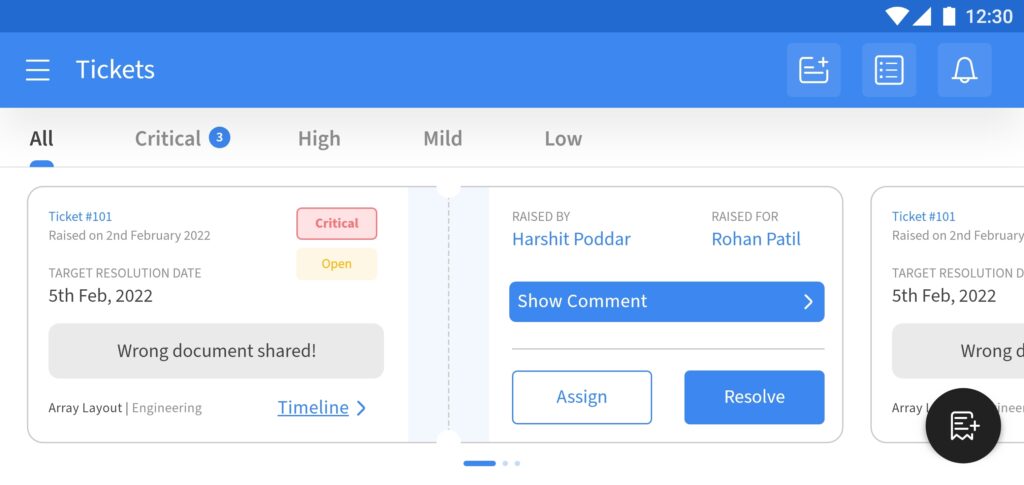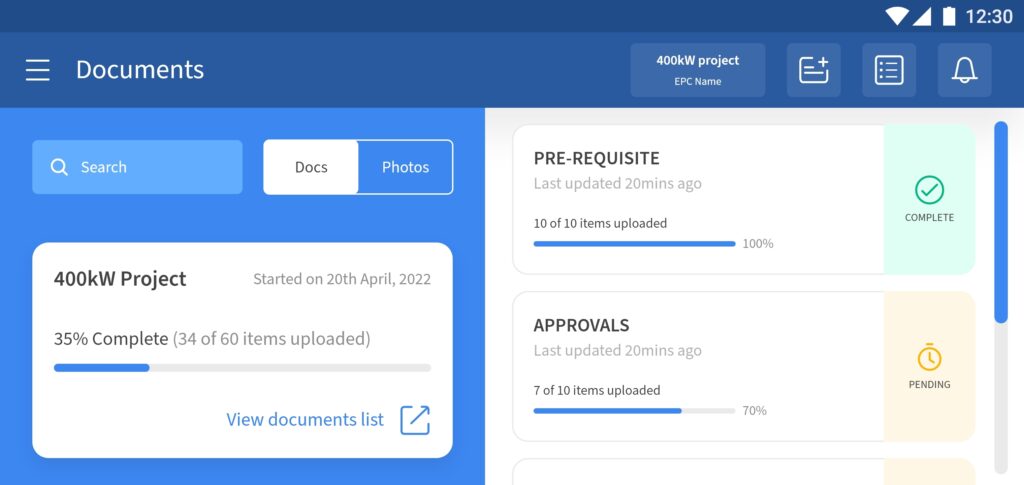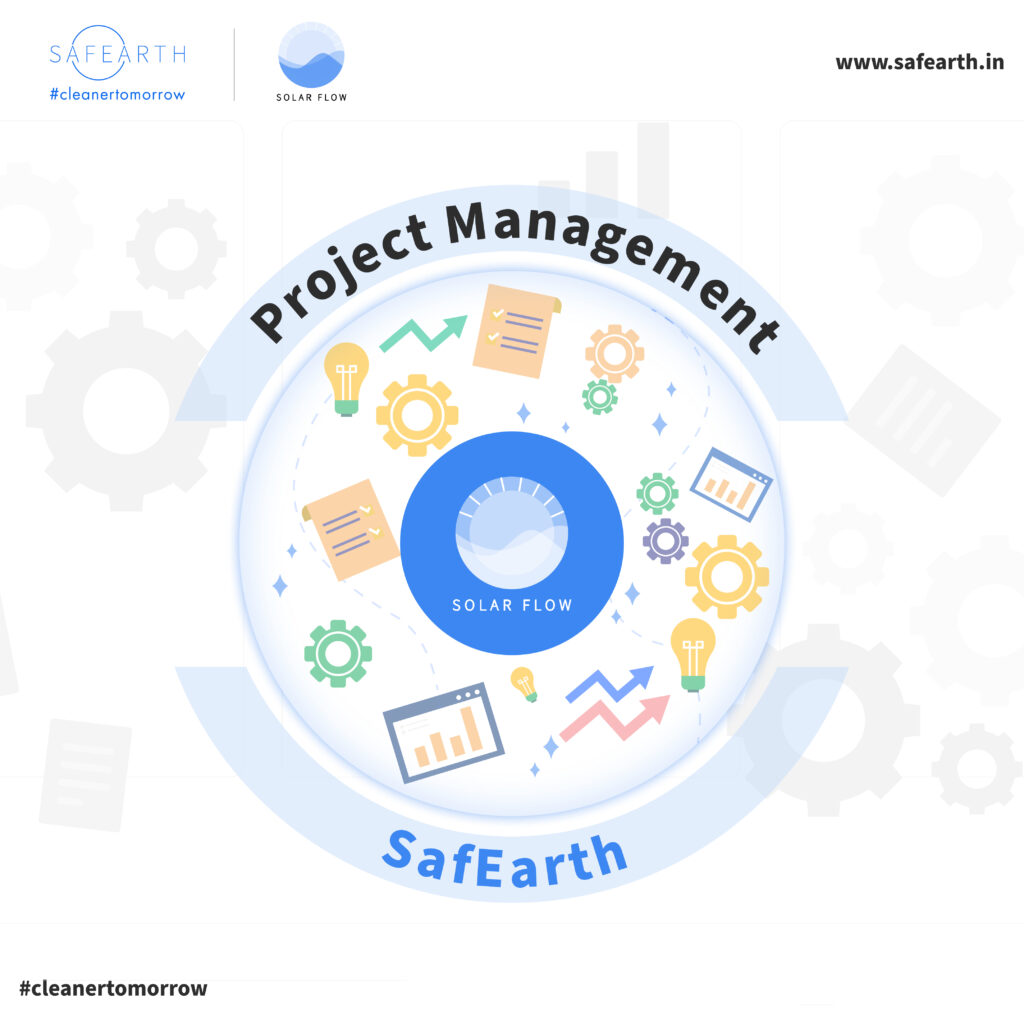India has great potential for solar energy. Every year, about 5,000 trillion kWh of solar energy hits India’s land, with most areas getting 4-7 kWh per square meter per day.
Solar power can be used effectively across the country, offering big growth opportunities. It allows for power generation in many places and enables quick increases in capacity with short preparation times. Off-grid and low-temperature applications are especially useful for rural areas, meeting various energy needs for power, heating, and cooling in both rural and urban regions.
From an energy security standpoint, solar energy is the safest option because it is abundantly available. Economically, India is the world’s fourth-largest renewables market, with the commercial and industrial solar segment being a main contributor.
In theory, even a small portion of the total solar energy received could meet all of India’s power needs if captured effectively. However, many solar projects struggle to be this effective.
In this blog, we will explore the challenges faced by Commercial and Industrial (C&I) solar projects in India and how project management software can help solve these problems.
C&I Solar Projects – Challenges in India
C&I solar projects in India face significant challenges mainly in: permits, project financing, customer acquisition, and efficient management. Each stage of these projects requires extensive paperwork and coordination, often depending on regulatory requirements and clearances from state departments and local authorities.
- Burdensome Permits and Documentation:
The permit phase alone needs a multitude of documents for land acquisition, environmental clearance, power purchase agreements, building permits, and water and land usage.
Inefficient document management can lead to outdated or incorrect information being used, causing costly errors and potential rework. For example, incorrect technical specifications might necessitate replacing materials or redoing parts of the installation, driving up costs significantly.
- Complicated Project Financing:
Securing project financing adds another layer of documents, communication, and coordination with third-party financiers. Misaligned objectives or poor communication during this phase can create bottlenecks and inefficiencies, further derailing the project timeline.
- Poor Team Coordination:
Solar projects require seamless teamwork among engineers, procurement specialists, construction crews, and project managers. Each team must align goals, share real-time updates, and understand their roles.
Poor coordination leads to delays, misunderstandings, and project failures. For example, if the procurement team doesn’t inform the construction crew about material delivery dates, it can cause delays and conflicts.
- Disorganized Document Management:
Solar projects generate a massive volume of documents, from designs and permits to contracts and technical specs. Efficient document management is crucial to avoid using outdated or incorrect information.
Poor management can lead to costly errors and rework, with expenses ranging from ₹4 lakh to ₹40 lakh per incident. For example, using incorrect technical specs might require replacing materials or redoing parts of the installation, significantly increasing costs.
- Inefficient Material Management:
Effective material management is crucial for solar project success. This includes procuring, tracking, and ensuring timely delivery and proper storage. Disruptions can cause delays and increased costs.
Failure to track materials can lead to shortages or overstocking, both costly. For example, poor shipment tracking can delay construction, causing idle time for the installation team, while excessive orders can tie up capital and create storage issues.
How to Beat Challenges in C&I Solar Project Installations?
India’s renewable energy sector is the fourth largest in the world. Commercial and industrial (C&I) establishments are a big part of this growth. They are crucial for India’s clean energy goals for 2030. Using a custom solar project management tool like Solar Flow can help C&I establishments switch to solar smoothly and efficiently with zero heartburn.
Introducing Solar Flow by SafEarth
Solar Flow is a full stack solar project management tool. It simplifies and streamlines the solar project installation process. Solar Flow captures every event at every stage of a solar project. It provides a user – friendly interface and a full suite of customization options.
Solar Flow is perfect for C&I establishments and EPC businesses of all sizes. It provides insights into project progression while keeping all stakeholders informed round the clock. Here are seven ways Solar Flow can power your business –
- Real Time Communication and Collaboration: Increased Efficiency :
Effective communication is key to a successful project. Solar Flow automates communication between all teams involved in a solar project. Its live, interactive Gantt charts let everyone track progress. This keeps everyone on the same page and reduces miscommunication and errors.
Solar Flow offers more than just basic messaging. It provides a platform for detailed project discussions, updates, and real-time notifications. This ensures changes in project scope, schedule adjustments, or urgent updates are communicated quickly.
Here’s a case study from our customers –
Case Study: Boosting Team Coordination for 15% Faster Project Completion
A prominent solar energy company with a global footprint and over 2000 MW of installed solar projects faced considerable delays and rework. The primary cause was a poor team coordination, which couldn’t keep pace with their rapid growth.
They opted for Solar Flow’s real-time communication and collaboration tools resulting in a 15% faster project completion.
| Before Solar Flow | After Solar Flow |
| Miscommunications among engineers, procurement specialists, and construction crews. Delays were common, impacting the project’s overall efficiency. The lack of coordination slowed down the project. | Teams used live, interactive Gantt charts to stay aligned and updated. Miscommunications and delays were reduced. Team coordination improved, leading to a 15% faster project completion. Coordination-related issues dropped by 30%, making the workflow smoother. |
- Tailored SOP Implementation: Customized for Your Needs:
Solar Flow lets you use your own Standard Operating Procedures (SOPs) for projects. It adapts to your specific workflow or process. This ensures your projects are done exactly the way you want, giving you full control and consistency.
- Customer Portal: Boosting Satisfaction and Trust:
Customer satisfaction is key to our solar project success. Solar Flow’s customer portal gives your clients a single place to oversee the project. It provides daily updates automatically, keeping customers informed. They can access all project documents and report any issues. This transparency builds trust and improves satisfaction.
With the customer portal, your clients are empowered to see real-time updates and project timelines. They can download necessary documents, cutting down the need for frequent status meetings. This keeps your clients happy and well-informed. It cuts down time spent on repetitive tasks and status update meetings.

- Document Management System: Streamlined Efficiency:
Efficient document management is key to project success. Solar Flow’s built-in system tracks versions of engineering drawings, ensuring the latest versions are instantly available to the right people with a click. Once a file is uploaded, it’s automatically accessible to all necessary personnel.
For example, when you upload your array layout, it becomes instantly available to the teams responsible for building and linking it. This ensures everyone has the information they need when they need it, enhancing efficiency and coordination.
Here’s a real life example of a large Solar EPC, a big name in the renewable industry with over 3600 MW of worldwide solar project installations to their credit.

Case Study: Streamlined Document Management Saves ₹10 Lakh
A top renewable energy firm, with over 3600 MW of solar projects worldwide, faced big delays from poor document handling. Their manual system led to mistakes and costly rework. They switched to Solar Flow’s document management. Here’s what happened next:
| Before Solar Flow | After Solar Flow |
| Slow processing of permits, financing, and customer documents. Frequent errors due to manual work. Delays in sharing and approving documents, slowing down the project. | All documents were handled on one platform. Sharing, revising, and approving became fast and easy. The project timeline was cut by 20%.₹10 lakh was saved by avoiding rework and errors. |
- Material Management System: Ensuring Smooth Operations:
Solar Flow’s Material Management system is a game-changer for project efficiency. It tracks materials from the initial Request for Quotation (RfQ) stage to the Purchase Order (PO) release, through shipment, and into the construction phases. Serving as a single point for all material documents, it streamlines the entire process, reducing the risk of delays and shortages. With Solar Flow, you get a clear view of your inventory, delivery schedules, and material usage. This visibility helps you plan better and avoid shortages or overstock situations. For instance, if a shipment delay is expected, the system flags the issue early, allowing project managers to adjust the construction schedule or find new suppliers. This proactive approach minimizes the impact on project timelines, ensuring smooth operations and successful project completion. Here’s a real life example of the material management feature of Solar Flow in action.
Case Study: Saving ₹15 Lakh by Improving Material Management
A major player in the global solar energy market, known for its expansive portfolio of over 4200 MW in solar installations, struggled with inefficiencies due to outdated material management practices. The reliance on manual processes caused frequent errors and project delays.
The result is as follows:
| Before Solar Flow | After Solar Flow |
| Difficulties tracking shipments and ensuring timely deliveries. Inventory management problems leading to delays. Increased costs due to poor material tracking. | The team could efficiently track materials from the Request for Quotation (RfQ) stage to the Purchase Order (PO), shipment, and construction phases. The system provided clear visibility into inventory and delivery schedules. Material-related delays were reduced by 25%. The project saved ₹15 lakh in potential overstock and storage costs, ensuring smoother operations and on-time project completion. |
- Financial Management: Maximizing Profitability and Stability :
The goal of any project is to boost financial performance. Solar Flow improves efficiency, helping you do more with less and avoid profit-eroding issues. The platform tracks project finances and creates cash flow reports, aiding in better planning and ensuring financial stability.
Solar Flow provides insights into project costs, revenues, and cash flow. This allows for accurate budgeting, cost control, and financial planning. You can monitor spending against the budget in real-time, quickly spotting and fixing overspending. This proactive approach preserves profits and ensures long-term sustainability.
- Safety Control: Ensuring a Safe Work Environment :
Safety is crucial in any construction project. Solar Flow ensures daily safety checks on project sites, confirming that all safety rules are followed. With Solar Flow’s mobile app, you can monitor real-time updates, keeping safety a top priority.
Solar Flow lets you create and manage checklists, document safety incidents, and track corrective actions. This ensures compliance with safety rules and fosters a strong safety culture in your organization.
Key Benefits of Solar Flow for C&I:
Solar Flow is packed with features. They are made to streamline every aspect of solar project management. Here’s a closer look at some of its standout features :
- Custom Fit Platform:
Every project and organization is unique. Solar Flow is built to fit this diversity. The platform can be customized. You can do this to meet your standard operating procedures and project needs. This flexibility ensures that Solar Flow can adapt to your business processes. It does not force you to change your workflows to fit the software. - Secure Access:
Solar Flow is designed with Information Security and access control in mind. The platform provides right control. It ensures each team member has the information they need to do their job effectively. This improves efficiency. It also boosts security by limiting access to sensitive data.
For example, financial reports can be restricted to the finance team. Engineering drawings can be made accessible only to the design and construction teams. This level of control helps in protecting confidential information and preventing unauthorized access. - Mobile Control:
In today’s fast-paced world, having access to project information on the go is crucial. Solar Flow is available on all devices. This includes web browsers and Android and iOS apps.
Solar Flow is accessible on mobile. It lets you manage your projects from anywhere. This ensures that you are always in control. Whether you are at the project site or in a meeting, you can access live project updates. You can also communicate with your team, and make informed choices. For example, if you need to approve a purchase order while traveling, you can do so from your mobile device. This keeps the project on track and avoids delays.
Comparison : Traditional Tools vs. Solar Flow
To understand Solar Flow’s advantages, it’s helpful to compare it with traditional project management tools. Here’s how Solar Flow stands out :

| Traditional Tools | Solar Flow |
| Fragmented Systems: Using various software for different tasks leads to inefficiencies and errors. | Integrated Platform: Solar Flow provides a unified platform for all aspects of project management, including communication, document management, material tracking, and financial oversight. |
| Limited Customization: Few options for customization make it hard to tailor tools to specific needs. | Highly Customizable: Solar Flow allows seamless implementation of your SOPs and project workflows. |
| Manual Tracking: Manual tracking of materials and resources is slow and error-prone. | Automated Tracking: Solar Flow automates material and resource tracking, reducing errors and boosting efficiency. |
| Lack of Real-Time Updates: No real-time updates cause delays and miscommunication. | Real-Time Updates: Solar Flow features live Gantt charts and real-time updates, ensuring everyone has the latest information. |
| No Dedicated Customer Portal: Lack of a customer portal limits transparency and engagement. | Dedicated Customer Portal: Solar Flow offers a customer portal with real-time updates and access to all project documents, enhancing transparency and satisfaction. |
Power Up Your Solar Projects with Solar Flow
Managing solar projects is tough. Coordinating teams, handling documents, and tracking materials can be challenging. But with the right tools, you can turn these challenges into successes.
Solar Flow by SafEarth is more than a project tool. It’s a full solution for the solar EPC process. With easy-to-use features and customization, Solar Flow helps you manage projects smoothly.
Whether you’re a small team or a big company, Solar Flow gives you the tools to succeed. Improve efficiency, boost finances, and deliver great results to your customers.
Embrace the future with Solar Flow. Unlock your solar project’s full potential and let SafEarth guide you. Take your business to new heights.

